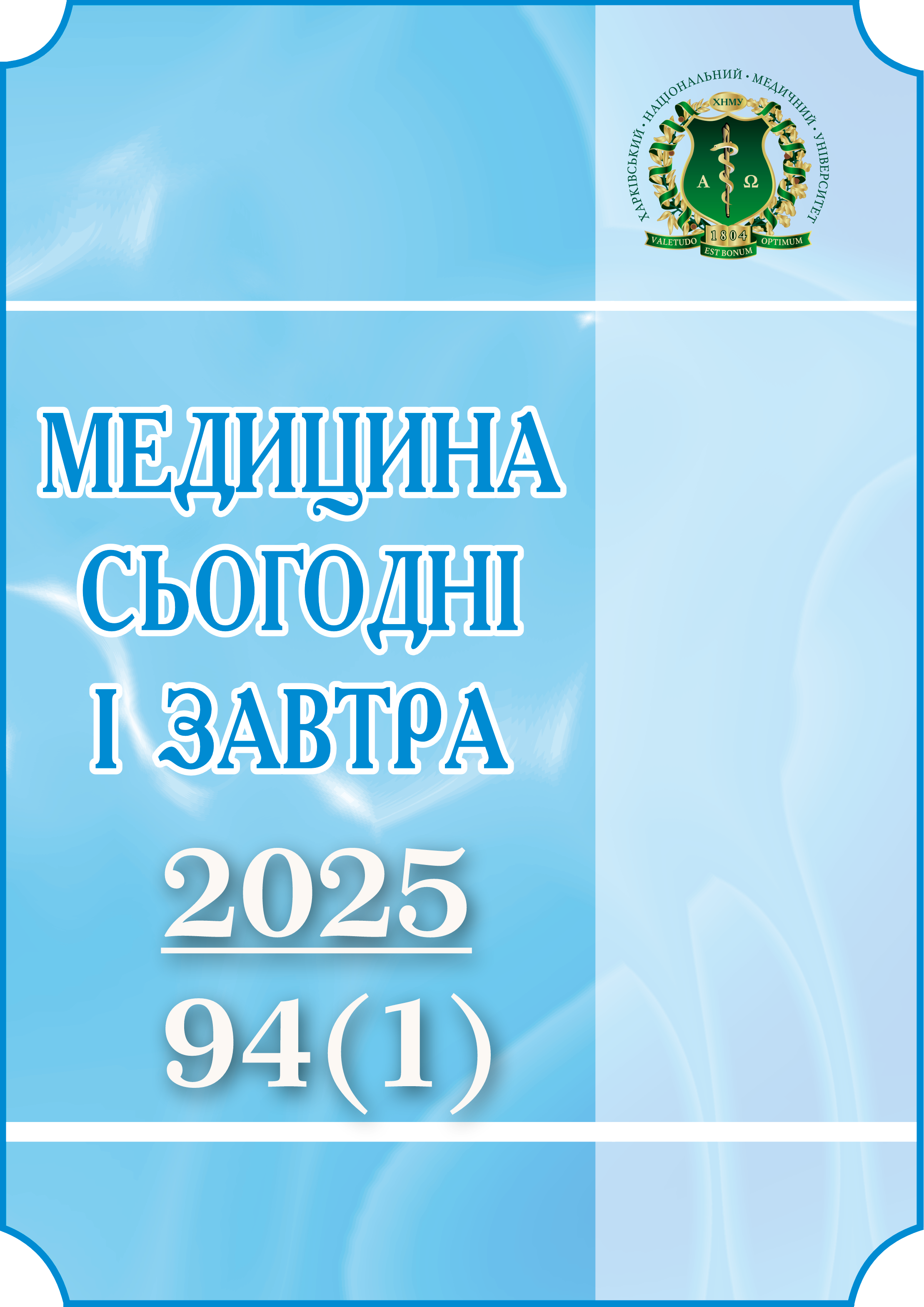Abstract
The aim of the work was to improve the results of surgical treatment of patients with hemorrhoids, based on the choice of tactics and selection of the optimal method of surgery for the patient, taking into account the advantages and disadvantages of using hemorrhoidectomy using various electrowelding equipment, or THD (Transanal Hemorrhoidal Dearterialization). Materials and methods: The use of THD and hemorrhoidectomy using electrowelding equipment for complicated hemorrhoids of stage II–IV was analyzed in 243 operated patients. Of these, 162 used THD in the DDD modification (Distal Doppler-guided Dearterialization), and 81 used "seamless" hemorrhoidectomy. Results of the studies and their discussion: Evaluation of the results of the operations included: assessment of the number of postoperative complications, intensity and duration of pain syndrome, wound regeneration rate, duration of patients' stay in the hospital, term of restoration of patients' working capacity. The length of hospital stay was [2.3±3] days after hemorrhoidectomy and [1.3±2] days after THD. The period of outpatient follow-up was [12–21] days for all patients. The working capacity of patients after hemorrhoidectomy was restored after [10–12] days. In patients after hemorrhoidectomy, the severity of pain syndrome, assessed by the Visual Analogue Scale, averaged 3.7 points, which corresponds to slight pain or tolerant pain during movements; in patients after THD – 2.4 points. A significant number of patients even refused anesthesia on the first day after surgery. As a result of the study, it was concluded that THD is a minimally invasive, at the same time, radical, surgical intervention. THD is appropriate for the surgical treatment of hemorrhoids of the II–III degree, especially complicated by bleeding. In stage IV it will be more expedient and clinically justified to perform hemorrhoidectomy using electrowelding equipment ("seamless" or "closed").
Keywords: hemorrhoids, THD, hemorrhoidal dearterialization, Doppler-controlled dearterialization, closed sutureless hemorrhoidectomy.
References
Zakharash МP, Usenko ОYu, Poyda ОІ, Boyko VV, Таmm ТІ, Мylytsya ММ, et al. Аssociation of coloproctologists of Ukraine. National recommendations of association of coloproctologists of Ukraine for management of patients with hemorrhoids, аdаpted for Guidelines of European Society of Coloproctologists (ЕSСP). Klinicheskaia Khirurgiia [Clinical Surgery]. 2020;87(7-8):89-104. DOI: 10.26779/2522-1396.2020.7-8.89. [In Ukrainian].
Nykonenko AA, Okhrimenko GI, Haidarzhi EI, Golovko NG, Zubryk IV, Grushka VA, et al. Transanal hemorrhoidal desarterization under ultrasound rectodopplerometry control in surgical treatment of hemorrhoids. Klinicheskaia Khirurgiia [Clinical Surgery]. 2020;87(11-12):62-6. DOI: 10.26779/2522-1396.2020.11-12.62. [In Ukrainian].
Kostenko EI. Organization of individual and comprehensive care for patients with hemorrhoids. Based on the materials of the scientific and practical conference. Ukrainian Medical Journal. 2024;162(4):3-7. DOI: 10.32471/umj.1680-3051.162.255826. [In Ukrainian].
Lei ML, Dong LL, Zhang HP, Yu YB. Does hemorrhoidal artery embolization really benefit patients with hemorrhoids? World Journal of Gastroenterology. 2024;30(42):4569-75. DOI: 10.3748/wjg.v30.i42.4569. PMID: 39563747.
Ratto C, Campenni P, Papeo F, Donisi L, Litta F, Parello A. Transanal hemorrhoidal dearterialization (THD) for hemorrhoidal disease: a single-center study on 1000 consecutive cases and a review of the literature. Techniques in Coloproctology. 2017;21(12):953-62. DOI: 10.1007/s10151-017-1726-5. PMID: 29170839.
Ivanchov PV, Lissov OI, Peresh YY. Experience of transanal hemorrhoidal dearterialization in the surgical treatment of grades II–IV hemorrhoids that bleeding. Experimental and Clinical Medicine. 2022;91(2):44-50. DOI: 10.35339/ekm.2022.91.2.ilp. [In Ukrainian].
Ivanchov PV, Lissov OI, Peresh YY, Sydorenko VM. Current trend in surgical treatment of hemorrhoid-closed hemorrhoidectomy without sutures. Our clinical experience. Hospital Surgery. Journal named by L.Ya. Kovalchuk. 2022;(4):59-64. DOI: 10.11603/2414-4533.2021.4.12718.
Roervik HD, Campos AH, Ilum L, Styr KFH, McKinstrey GK, Brandstrup B, et al. Minimal open hemorrhoidectomy. Techniques in Coloproctology. 2019;23(1):73-7. DOI: 10.1007/s10151-018-1915-x. PMID: 30725227.
Unal E, Holubar SD, Khan I. S28 LigaSure-Assisted Transanal Division of a Pouch Septum: A Stapler is Not Always the Answer. The American Journal of Gastroenterology. 2024;119(12S):S8-9. DOI: 10.14309/01.ajg.0001082644.22348.3a.
Mustapha B, Alatise OI, Olasehinde O, Adisa A, Wuraola FO, Mohammed TO, et al. LigaSure versus conventional Milligan MORGAN hemorrhoidectomy in Nigerian patients with symptomatic hemorrhoids. World Journal of Surgery. 2024;49(2):334-42 DOI: 10.1002/wjs.12416. PMID: 39578689.
Simillis C, Thoukididou SN, Slesser AA, Rasheed S, Tan E, Tekkis PP. Systematic review and network meta-analysis comparing clinical outcomes and effectiveness of surgical treatments for haemorrhoids. Br J Surg. 2015;102(13):1603-18. DOI: 10.1002/bjs.9913. PMID: 26420725.
Ratto C, Donisi L, Parello A, Litta F, Zaccone G, De Simone V. "Distal Doppler-guided dearterialization" is highly effective in treating haemorrhoids by transanal haemorrhoidal dearterialization. Colorectal Dis. 2012;14(11):e786-9. DOI: 10.1111/j.1463-1318.2012.03146.x. PMID: 22731786.
LaBella GD, Main WP, Hussain LR. Evaluation of transanal hemorrhoidal dearterialization: a single surgeon experience. Tech Coloproctol. 2015;19(3):153-7. DOI: 10.1007/s10151-015-1269-6. PMID: 25637412.
Liew AN, Wang J, Chen MZ, Tay YK, Kong JCH. Haemorrhoid artery ligation - recto anal repair (HAL-RAR) blind versus Doppler: a systematic review and meta-analysis. ANZ J Surg. 2024;94(11):2053-61. DOI: 10.1111/ans.19258. PMID: 39465535.
Trenti L, Biondo S, Galvez A, Bravo A, Cabrera J, Kreisler E. Distal Doppler-guided transanal hemorrhoidal dearterialization with mucopexy versus conventional hemorrhoidectomy for grade III and IV hemorrhoids: postoperative morbidity and long-term outcomes. Tech Coloproctol. 2017;21(5):337-44. DOI: 10.1007/s10151-017-1620-1. Erratum in: Tech Coloproctol. 2018;22(6):479. DOI: 10.1007/s10151-018-1805-2. PMID: 28451767.

This work is licensed under a Creative Commons Attribution-NonCommercial-ShareAlike 4.0 International License.

